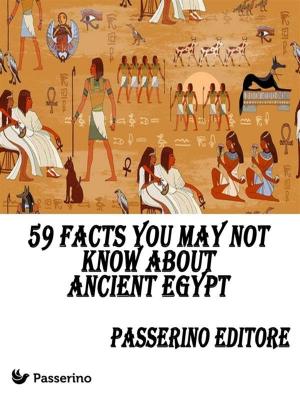| Author: | Henriette Broekema | ISBN: | 9789089547705 |
| Publisher: | Elikser B.V. Uitgeverij | Publication: | October 14, 2015 |
| Imprint: | Language: | English |
| Author: | Henriette Broekema |
| ISBN: | 9789089547705 |
| Publisher: | Elikser B.V. Uitgeverij |
| Publication: | October 14, 2015 |
| Imprint: | |
| Language: | English |
Inanna was the great goddess of the Sumerians, a people who lived 5000 year ago in the place we know today as Iraq where was created the first urban civilization in human history. Inanna, the goddess of sexual love and connected with the planet Venus was responsible for the fertility of the land and the later goddesses, the Greek Aphrodite and the Roman Venus adopted many aspects of Inanna. The kings worshipped Inanna and celebrated with her the Sacred Marriage rite, but they also needed her help during the many wars they were waging, which gave Inanna the aspects of a warrior goddess. As love goddess Inanna had a passionate love life and her great love was the shepherd Dumuzi, not a god, but a mortal human who wandered about the steppe with his cattle. The peasants sang love songs about Inanna and Dumuzi during the many feasts of the successive agricultural seasons, believing that their love affair stimulated the fertility of the crops and the fecundity of the livestock. But their idyll was not to last for long as Dumuzi was gruesomely murdered. The answer to the question of who killed Dumuzi and why, is hidden deep in the history of the ancient agrarian communities. The Sumerians wrote their texts on clay tablets that once dried could be preserved until our own day and thanks to this miraculous piece of luck we can cognizance of a number of magnificent hymns and myths written about Inanna. These archaic texts call up human emotions that find an answering response in the hearts of people today and are still capable of moving us deeply. In this book the myths are told against the back ground of Sumerian civilization and various aspects of society from this time are also discussed, such as convent life, divine kingship and funeral rites. One aspect of the funeral rites was The Great Wailing, a rite in which Inanna had an important role and which appears to have been performed in many countries around the Mediterranean in the Bronze Age and has left traces even in the Old and New Testament. Henriette Broekema's book makes the complex character and history of goddess Inanna accessible to the ordinary reader and based on the texts from that time, in twenty six richly illustrated chapters, she succeeds in bringing the astonishing world of the goddess Inanna to life.
Inanna was the great goddess of the Sumerians, a people who lived 5000 year ago in the place we know today as Iraq where was created the first urban civilization in human history. Inanna, the goddess of sexual love and connected with the planet Venus was responsible for the fertility of the land and the later goddesses, the Greek Aphrodite and the Roman Venus adopted many aspects of Inanna. The kings worshipped Inanna and celebrated with her the Sacred Marriage rite, but they also needed her help during the many wars they were waging, which gave Inanna the aspects of a warrior goddess. As love goddess Inanna had a passionate love life and her great love was the shepherd Dumuzi, not a god, but a mortal human who wandered about the steppe with his cattle. The peasants sang love songs about Inanna and Dumuzi during the many feasts of the successive agricultural seasons, believing that their love affair stimulated the fertility of the crops and the fecundity of the livestock. But their idyll was not to last for long as Dumuzi was gruesomely murdered. The answer to the question of who killed Dumuzi and why, is hidden deep in the history of the ancient agrarian communities. The Sumerians wrote their texts on clay tablets that once dried could be preserved until our own day and thanks to this miraculous piece of luck we can cognizance of a number of magnificent hymns and myths written about Inanna. These archaic texts call up human emotions that find an answering response in the hearts of people today and are still capable of moving us deeply. In this book the myths are told against the back ground of Sumerian civilization and various aspects of society from this time are also discussed, such as convent life, divine kingship and funeral rites. One aspect of the funeral rites was The Great Wailing, a rite in which Inanna had an important role and which appears to have been performed in many countries around the Mediterranean in the Bronze Age and has left traces even in the Old and New Testament. Henriette Broekema's book makes the complex character and history of goddess Inanna accessible to the ordinary reader and based on the texts from that time, in twenty six richly illustrated chapters, she succeeds in bringing the astonishing world of the goddess Inanna to life.















